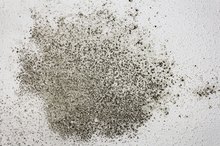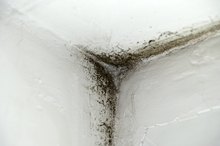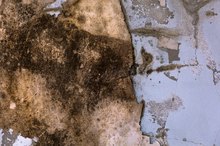What does fact checked mean?
At Healthfully, we strive to deliver objective content that is accurate and up-to-date. Our team periodically reviews articles in order to ensure content quality. The sources cited below consist of evidence from peer-reviewed journals, prominent medical organizations, academic associations, and government data.
The information contained on this site is for informational purposes only, and should not be used as a substitute for the advice of a professional health care provider. Please check with the appropriate physician regarding health questions and concerns. Although we strive to deliver accurate and up-to-date information, no guarantee to that effect is made.
Physical Symptoms of Mold Illness
Molds are a type of fungi, and they can be found in houses and buildings and outdoors. Inside, they are commonly found in moist, dark areas such as corners of a bathroom or basement. They also commonly grow along water-damaged walls. Outside you may run into mold in a pile of leaves that have been sitting for a while or in dusty grass clippings. Many people react to mold spores, and the reaction can be from a few sneezes to lung trouble. According to Bio-sign Laboratories, makers of mold test kits, there are different degrees of mold illness symptoms, and the severity of the symptoms depend upon how long you have been exposed to mold spores 1.
If you are experiencing serious medical symptoms, seek emergency treatment immediately.
Mild Mold Illness Symptoms
Common symptoms of light mold exposure can resemble allergy symptoms. They include itchy, watery eyes, itchy and red skin, sneezing and headaches. These mild symptoms are usually a result of temporary exposure to mold spores, such as a one-time raking of moldy leaves. According to the Washington State Department of Health, if you do not have underlying medical conditions and have a healthy immune system, you may not experience a reaction to mold spores.
- Common symptoms of light mold exposure can resemble allergy symptoms.
- These mild symptoms are usually a result of temporary exposure to mold spores, such as a one-time raking of moldy leaves.
Moderate Mold Illness Symptoms
Diseases Linked to Black Mold
Learn More
The Centers for Disease Control reports that if you have a mold allergy or are sensitive to mold, the symptoms of mold illness can be a bit more severe 2. Some of these symptoms are eye irritation, nasal stuffiness and wheezing during breathing. If you are exposed to mold on a regular basis or on and off for a longer length of time, reactions can consist of shortness of breath, fever, and lung problems due to lung infection.
- The Centers for Disease Control reports that if you have a mold allergy or are sensitive to mold, the symptoms of mold illness can be a bit more severe 2.
- If you are exposed to mold on a regular basis or on and off for a longer length of time, reactions can consist of shortness of breath, fever, and lung problems due to lung infection.
Severe Mold Illness Symptoms
Severe mold illness symptoms are often experienced if you are exposed to high levels of mold over an extended length of time, such as over the course of several years. The symptoms include severe eye damage, including blindness, long-term memory loss, severe lung trouble such as bleeding lungs and possibly cancer.
If you are concerned about mold exposure, check your home to make sure there are no hidden areas of mold growth. Speak to your doctor if you have had previous mold exposure, and discuss any symptoms you may be experiencing.
- Severe mold illness symptoms are often experienced if you are exposed to high levels of mold over an extended length of time, such as over the course of several years.
Related Articles
References
- Bio-Sign Laboratories: Symptoms of mold sickness
- Centers for Disease Control: Mold information
- Amirhosein Ghaffarianhoseini, Husam AlWaer, Hossein Omrany, Ali Ghaffarianhoseini, Chaham Alalouch, Derek Clements-Croome & John Tookey (2018) Sick building syndrome: are we doing enough?. Architectural Science Review,61:3, 99-121.
- American College of Allergy, Asthma & Immunology. Mold Allergy. Reviewed April 23, 2018.
- Centers for Disease Control and Prevention. Fungal Diseases. Reviewed May 6, 2019.
- Centers for Disease Control and Prevention. Mold. Basic Facts. Reviewed December 20, 2017
- Asthma and Allergy Foundation of America. Mold Allergy. Reviewed October 2015.
- Centers for Disease Control and Prevention. Molds in the Environment. Rreviewed December 20, 2017.
- Asthma and Allergy Foundation of America, Mold Allergy
- Centers for Disease Control and Prevention (CDC), Mold, Basic Facts
- Rudert A, Portnoy J.Mold allergy: is it real and what do we do about it?Expert Rev Clin Immunol. 2017 Aug;13(8):823-835. doi: 10.1080/1744666X.2017.1324298. Epub 2017 May 17.
Writer Bio
A certified nutritionist who majored in health, fitness and nutrition, Traci Vandermark has been writing articles in her specialty fields since 1998. Her articles have appeared both online and in print for publications such as Simple Abundance, "Catskill Country Magazine," "Birds and Blooms," "Cappers" and "Country Discoveries."








